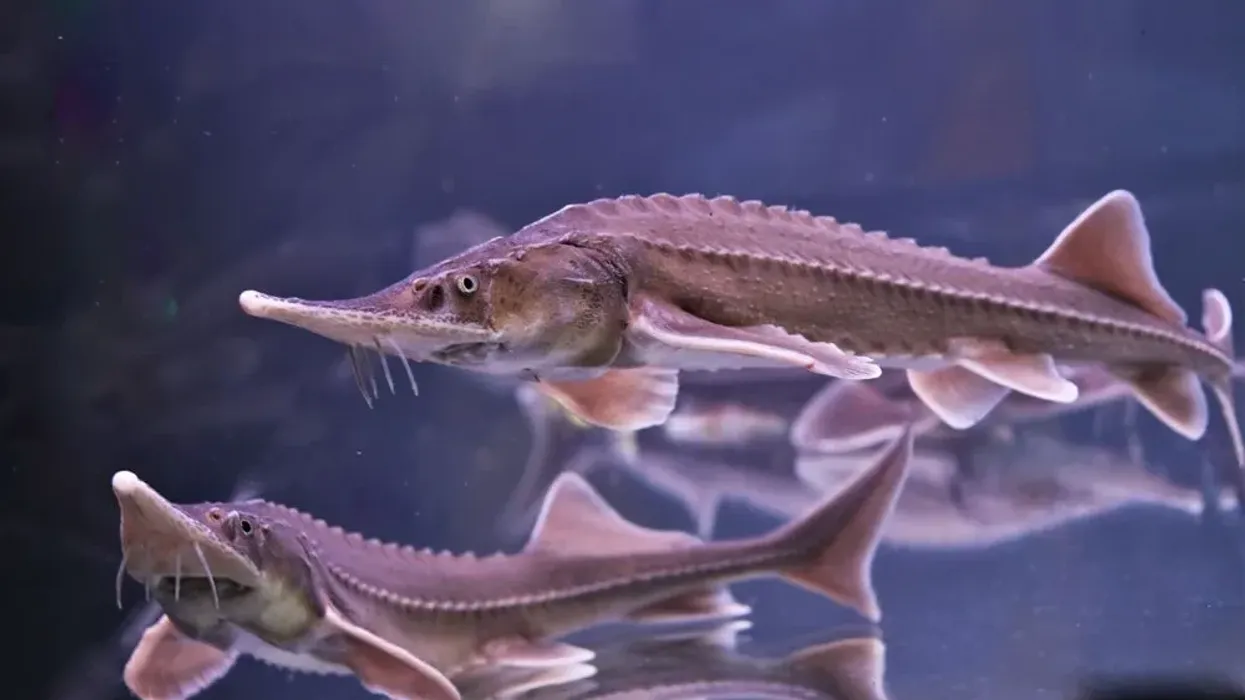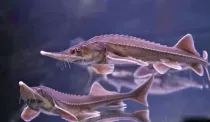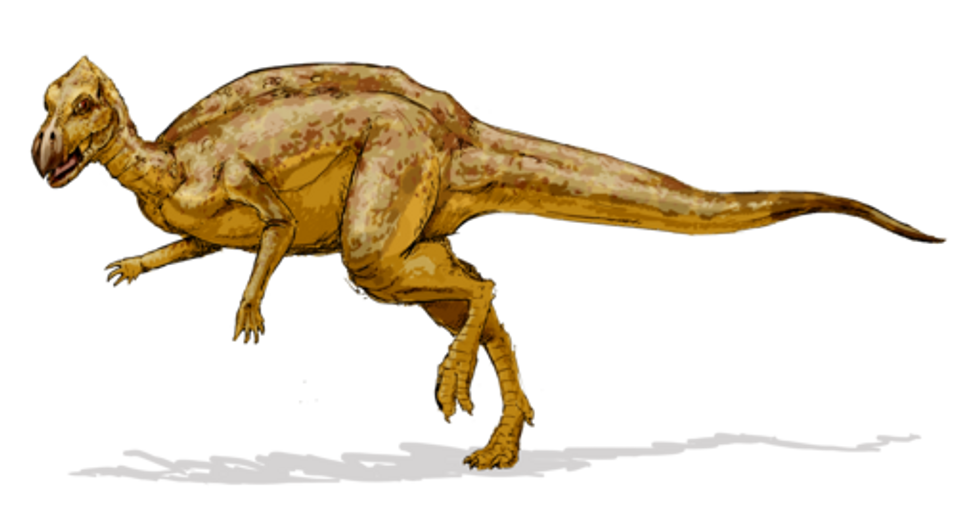The Siberian sturgeon (Acipenser baerii) is a species of sturgeons found most in the river basins of Siberia. The species is also divided into subspecies depending on which rivers it is found in.
The Siberian sturgeon is known to migrate to rivers from the sea to spawn during the breeding season. In captivity too, this species is very popular due to its compatibility in a pond structure.
The Siberian sturgeon is one one of the most valuable species of fishes in aquaculture due to the ability to produce Siberian sturgeon caviar and also high-quality meat. This is the reason they are farmed extensively in many parts of the world.
However, when the species is farmed in various farms, the rearing conditions are quite favorable, when compared to the wild.
France is the largest producer of Siberian sturgeon caviar, while China and Russia are the largest producers of high-quality meat from the fish species. Russia is also the producer of caviars from the eggs of Russian Osetra, a good substitute for the caviars from Siberian sturgeons.
Read on to learn more. For more relatable content, check out these facts about the fangtooth and the banjo catfish.
Siberian Sturgeon Interesting Facts
What type of animal is a Siberian sturgeon?
The Siberian sturgeon (Acipenser baerii) is a species of sturgeon found in most river systems in its range of habitats.
What class of animal does a Siberian sturgeon belong to?
The Siberian sturgeon falls under the class of Actinopterygii in the kingdom of Animalia.
How many Siberian sturgeons are there in the world?
The Siberian sturgeon population is not known. However, the populations of the species are decreasing rapidly due to over-fishing, poaching, and the construction of dams in their freshwater natural habitats.
Where does a Siberian sturgeon live?
The endangered Siberian sturgeon range of distribution includes key Siberian river basins from Ob to Kolyma and Lake Baikal. The fish is found in basins that drain into Laptev, Kara, and East Siberian seas.
This includes Yenisei, Ob, Lena, and Kolyma rivers. These endangered species are also found in China, Kazakhstan, Russia, and Mongolia. The fish found in Lake Baikal migrate to the Selenga river for spawning.
What is a Siberian sturgeon's habitat?
The Siberian sturgeon habitat consists of river systems. The fish are found mostly in the middle and lower sections of the river basins. They are a freshwater species.
Who do Siberian sturgeon live with?
They are found in a group and are not usually shy. They are not known to be aggressive towards any species of fishes.
How long does a Siberian sturgeon live?
The Siberian sturgeon can live for an age up to 60 years.
How do they reproduce?
The development in the young of the fish is quite slow and males reach sexual maturity at the age of 11-24 years while the females reach sexual maturity at the age of 20-28 years. Females are known to spawn only once in a few years.
May to June is the breeding season and females lay a clutch of up to 420,000 eggs. The fish prefer areas with gravel or rocky substrate to spawn. They are known to migrate from the sea to rivers to spawn during the breeding season.
Along with breeding in the wild, the fish are also bred in farms and are popular in aquaculture. Breeding in farms helps to keep track of the development of the fish and their eggs.
What is their conservation status?
The Siberian sturgeon distribution in its habitat has reduced quite a bit in recent years. The population has also decreased at an alarming rate leading to the categorization of the Siberian sturgeon (Acipenser baerii) as Endangered by the IUCN Red List.
The Endangered status has come into effect as the population has decreased 50-80% in the last 60 years.
Overfishing and habitat degradation for this category of fish is said to be the main reason for the species being Endangered as these practices block the natural migratory routes. The fish is considered Endangered in Russia, China, Kazakhstan, and Mongolia.
Siberian Sturgeon Fun Facts
What do Siberian sturgeon look like?
The sides and the back are fully dark gray-brown to black colored. The fin edges and scutes are close in coloration to the surrounding skin. The belly is white in color with gray spots.
The species have a long and pointed snout. There are four barbels in front of the mouth.
These barbels help them to detect and find food at the bottom of the river and lake. There is a white tip in the extended snout that is rounded and slightly upturned. The Siberian sturgeon has 32-62 lateral scutes, 10-12 dorsal scutes, 7-16 ventral scutes, 30-56 dorsal-fin rays, and 17-33 anal fin rays.
The young grow pretty quickly up to the age of one and slows down when they reach 3 ft (91 cm). The Siberian sturgeon is quite similar to the sterlet with similar body shapes and long pointed noses.
How cute are they?
These fish are not considered cute. They are harvested for their meat and dark glossy caviar.
How do they communicate?
Sturgeons usually communicate by movement and jumps.
How big is a Siberian sturgeon?
The Siberian sturgeon size is quite small when compared to other species of sturgeons. Its length range is between 3.2-6.5 ft (1-2 m). The largest beluga sturgeon species ever caught had a weight of 3463 lb (1571 kg) and a length that has a range up to 24 ft (732 cm).
How fast can a Siberian sturgeon swim?
The speed of the Siberian sturgeon is not known. It is however pretty quick and agile due to its long and elongated body. It often moves around from the sea and rivers.
How much does a weigh?
The weight of the endangered Siberian sturgeon (Acipenser baerii) ranges between 22-463 lb (10-210 kg). However, on average, the fish weighs around 143 lb (65 kg).
Pallid sturgeon is a species of a different genus. It is very lightweight with its weight going up to 86 lb (39 kg). Their length is also quite smaller than the Siberian sturgeon species with the length ranging from 30-60 in (76-152 cm).
What are the male and female names of the species?
Males and females of the Siberian sturgeon are not given different names. They are collectively known by their scientific name.
What would you call a baby Siberian sturgeon?
A baby Siberian sturgeon is called a young or juvenile.
What do they eat?
The food of this species includes crustaceans and chironomid larvae. They also feed on different wastes and debris. They are largely carnivorous and need protein in their meals. Most species of surgeons in the wild are known to feed on shrimp, snails, crayfish, plants, insect larvae, insects, and worms.
Are they poisonous?
They are not poisonous.
Would they make a good pet?
Although they are not considered pets, the fish are quite popular in aquaculture. Wild catches of the fish have declined increasingly, but Siberian sturgeons are farmed all over the world for their meat.
Their meat is consumed as food in many parts of the world. Also, Siberian sturgeon caviar has become popular in recent times and is produced from the masses of eggs in the fish species. They are a good substitute for Russian Osetra.
The species is farmed extensively in Russia, France, and China. While in captivity, the fish are only threatened by health issues related to food and oxygen. So, taking care of these is very necessary.
Did you know...
Russia and China produce the largest quantity of meat of the Endangered species – Siberian sturgeon (Acipenser baerii). The fish species are mostly farmed in those regions in freshwater ponds.
The growth of the sturgeons depends on temperature and food quality. In a year, they can grow up to 8-10 in (20-25 cm). However, the growth of the fish slows down once they reach around 3 ft (91 cm) in length.
Sturgeons live for a much longer period than normal fishes. The Siberian sturgeon, for example, lives up to the age of 60.
Sturgeons do not have teeth. They use their suction-like mouth to capture their prey.
Sturgeons need a pond of at least 3566-7133 gal (13500-27000 l) when mature. As a rule, the pond should be 10 times the size of the sturgeons.
How many types of sturgeons are there?
There are around 27 species of sturgeons living in the world. They are part of the family Acipenseridae.
Are Siberian sturgeons endangered?
The Siberian sturgeon is categorized as Endangered due to various reasons. This species of sturgeons has gone through practices like poaching, overfishing, and blocking of the migratory path for almost 60 years now.
The fish have also been given the Endangered status in Russia, China, Mongolia, and Kazakhstan. There is a serious threat to the populations of the Siberian sturgeons.
Here at Kidadl, we have carefully created lots of interesting family-friendly animal facts for everyone to discover! Learn more about some other fish from our giant frogfish facts and pigfish facts pages.
You can even occupy yourself at home by coloring in one of our Siberian sturgeons coloring pages.










